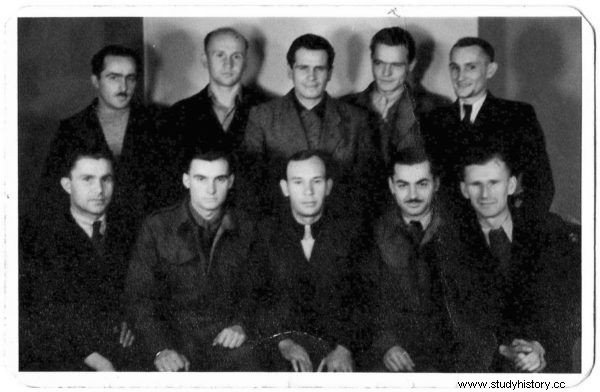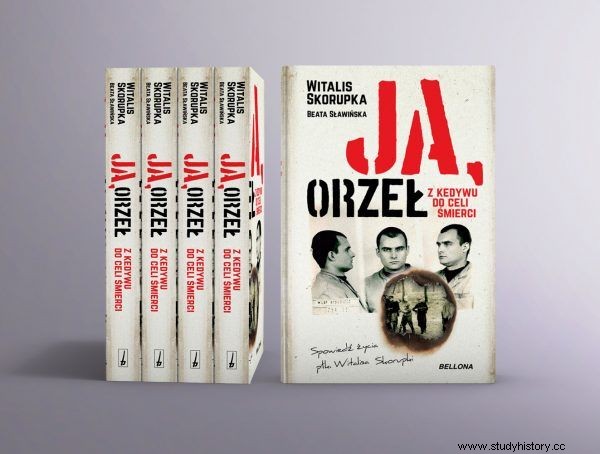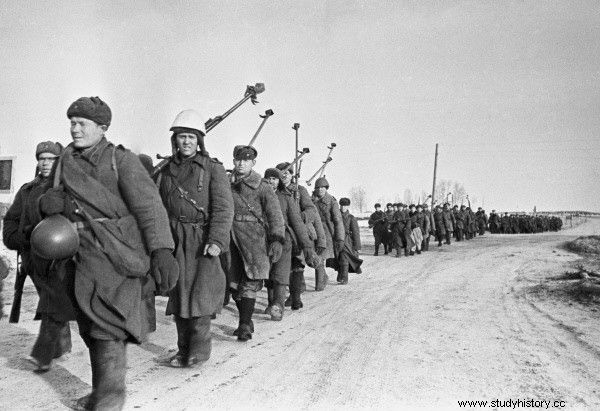The plan of the Polish command assumed the liberation of Polish lands just before the Red Army entered them. They wanted the Home Army units to act as hosts against the Soviets. In practice, Operation Tempest turned out to be much more difficult. And the meeting with the Red Army soldiers - unforgettable ...
During World War II, the front crossed the eastern territories of the Second Polish Republic many times. The bloodshed seemed to be endless. However, when at the end of 1943 the fighting started to approach Polish borders again, the Poles decided to once again show their strength in the fight against the Germans. This was the purpose of Operation Tempest, through which the Home Army soldiers wanted to draw the boundaries of their pre-war state in the confrontation with the coming Red Army. It began on January 15, 1944 in Volhynia, where the 27th Volhynian Infantry Division of the Home Army fought.
First contacts and misunderstandings
The rank and file, carrying out the orders of the command and trying to establish cooperation with the Soviet troops, could not suspect what was threatening them. However, the Soviet commissioners, having clear instructions for action, quickly corrected them . At least this was the case with Witalis Skorupka "Orzel", an Home Army soldier who fought in the Siedlce region. The "storm" began there in July 1944. As he says in the book I, Orzeł. From Kedyw to Death Row ” :
We made contact with the Soviets because we had received our order. Due to the fact that my mother was born in Mariupol, a town in what was then Russia, and she always told me to learn Russian, I spoke it well [...].

The partisans quickly found out what were the real intentions of the Soviets entering Poland. A photo from the book “Ja, Orzeł. From Kedyw to Death Row ”presents the soldiers of Kedyw from Siedlce from the 22nd infantry regiment of the Home Army. Witalis Skorupka "Orzel" is in the seated row (second from the left).
I had such a conversation with a Russian woman, Commissioner I think […]. Her first question is, "Who are you righteous for?" - For what power? I answer her, 'We are for London. Our righteousness is in London. ' She replied to me: "Niczewo, an idiot from Moscow is your righteousness" .
As Skorupka recalls, the approach of Red Army soldiers towards Poles was ambiguous. On the one hand, they eagerly used the help of partisans, and on the other, they showed considerable distrust. At one point, they accused members of the independence underground even of cooperating with Germany!
All because a group of refugees joined the Home Army unit. They were Poles, previously forced to join the Wehrmacht and thus wearing German uniforms. Their presence was a pretext for the Soviets to refuse to attack Sokołów and Białystok together.

To Poland on a sleigh
And what impression did the Soviet troops make on the inhabitants and defenders of the "liberated" country? From the story of "Orzel" it can be concluded that at least before the terror and arrests began, it was surprise mixed with disbelief. And not only because of poor uniforms and often incomplete equipment. It is enough to quote from the book "Me, the Eagle. From Kedyw to Death Row ” description of the entry of the Red Army to Siedlce:
The Soviet armored unit counted, as far as I can remember, 11 T-34 tanks. When the tanks entered Siedlce, they were followed by infantry - mostly Asians. Interestingly, there were sleds behind some of the tanks, and Asian soldiers on them. There were no other vehicles apart from the tanks and the sleigh. The Soviets robbed huge sleighs from Polish mansions and farms that they encountered on the way during the "liberation" of our country. The infantry sat on tanks and sleigh pulled by tanks.
"It was an unusual sight," concludes the case Skorupka. And he adds:"Well, but we did not expect anything better from the Red Army."
Soon, the practice of the front dispelled the naive faith in the Polish-Soviet brotherhood. Polish partisans were disarmed and subjected to various harassments. Some were sent deep into Russia for years, and others had to undergo interrogation. Still others tried to adapt to the new reality so as not to fall into the snares of the NKVD.

Red Army troops often presented an unusual sight. They entered Siedlce on a sleigh. Illustrative photo.
"Orzel" and his unit had heard the end of "The Tempest" in Vilnius and Volhynia before. Despite the disturbing news from the east, they nevertheless followed their orders. And these required cooperation.
It is possible that the history of the Home Army group near Siedlce would also end with deportations and arrests. Fortunately, a lieutenant of Ukrainian origin serving in the Soviet army persuaded Skorupka and his colleagues to flee, bury their weapons and disguise themselves in civilian clothes. At that time, similar orders were issued by Colonel Zawarczyński, who had just arrived in the city. "He gave an order to the commanders who survived that we should start hiding, because the Soviets and communists would start catching us," says Skorupka.
"Orzel" was in hiding for several days. Later he was given his next military assignment. He was assigned to deliver a secret package to the commanders of the Warsaw Uprising. But that was a completely different story.
Source:
- Witalis Skorupka, Beata Sławińska, Me, Orzeł. From Kedyw to Death Row , Bellona 2018.
Learn about the fate of one of the bravest and toughest soldiers of the Polish independence underground

